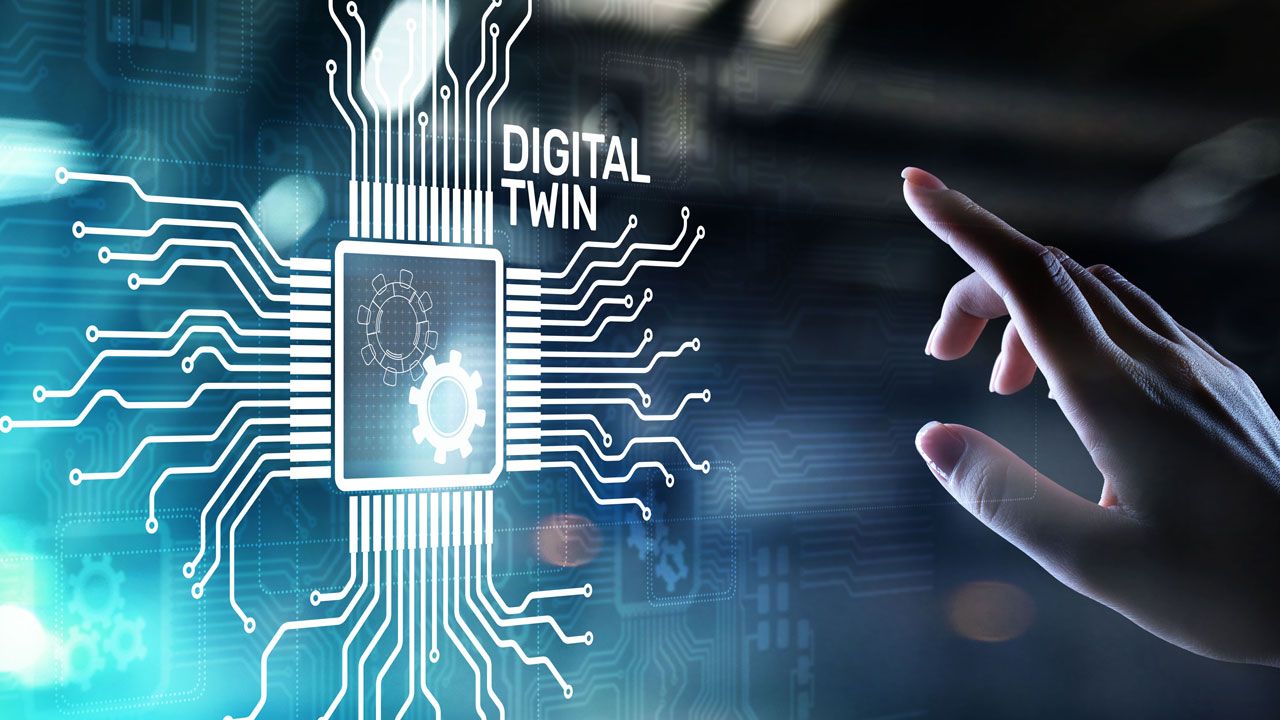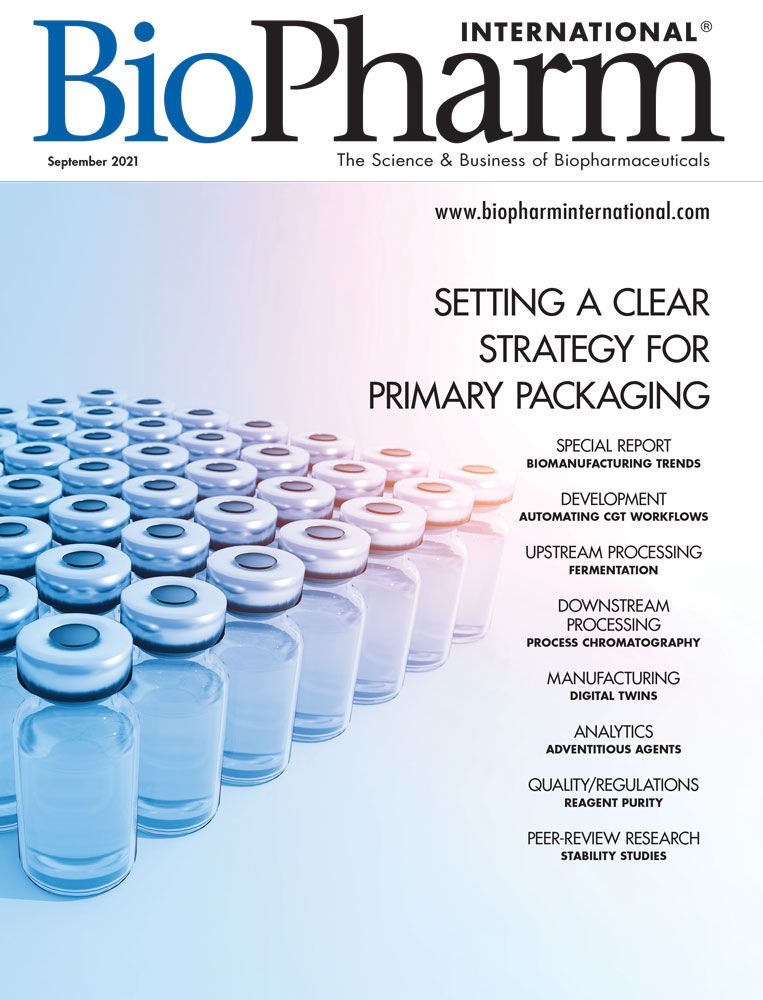Opportunities for Digital Twins
Models of biopharmaceutical processes can be used for speeding development and improving process control.
WrightStudio/Stock.Adobe.com

Digital twins of pharmaceutical manufacturing processes use in silico simulation of the actual process that developers can use as a tool to gain better understanding of how variables, such as raw materials, equipment, and process conditions, affect outcomes. These models can then be used in process development, as well as in manufacturing process control.
Models for upstream and downstream
Digital twins from Siemens Process Systems Engineering (SPSE), which was acquired by Siemens in 2019, are being used in a wide range of unit operations for process development and manufacturing. Use of the SPSE gPROMS FormulatedProducts mechanistic modeling platform began in small-molecule drug manufacturing, and in 2018, SPSE began translating this experience into biopharmaceutical modeling.
“The value of the approach is well established for downstream process modeling (e.g., chromatography, etc.),” says Edward Close, strategy director for pharma biologics, SPSE. He says that these downstream models are being adopted by industry to support their current design of experiments approach. Models for upstream processes, however, are less mature, says Close.
“Developing a highly accurate upstream model is more challenging because of the biological nature of the process and very large design space,” says Close. “The models are less mature, and there’s still a lot of research ongoing, not just on modeling, but also on our fundamental understanding of the process itself, which is far from complete.” Even at this stage, however, the models offer value for reducing the number of experiments required.
Close says that the majority of modeling work at SPSE supports R&D and development, but that there is opportunity for using the models for manufacturing process control as well. “We have successfully completed proof-of-concept projects for bioreactor monitors used for decision support in operations. In general, there is huge scope for digital twins in biopharma and a great deal of interest in the industry,” he reports.
Models for cell culture
German software company Insilico Biotechnology launched the “Insilico Advisor” for cell culture manufacturing processes in April 2021. This new application of digital twin technology allows the prediction of potential future process deviations and also suggests measures to bring the cultivation back on track, explains Klaus Mauch, CEO of Germany-based Insilico Biotechnology.
Efforts to make data available have been crucial, says Mauch. As biopharmaceutical manufacturing becomes more digitalized, the greater availability of process data is enabling the development and use of digital twins to enable model predictive monitoring of cell culture processes. Digital twins are useful in both speeding process development and in improving efficiency and quality in manufacturing.
Insilico’s digital twin is built with a hybrid approach that uses mechanistic and material balance “rules” combined with process data. “We have developed rules using the biochemical pathway in cells for the models. These are combined with process data, which can be exploited using artificial intelligence to predict cell culture performance and flag future deviations,” says Mauch.
He explains that without such digital tools, deviations in the cell culture process are discovered only after they occur. With predictive tools, however, operators can take corrective and preventive actions to prevent deviations from occurring. The digital twin enables predictions about the future state of the process, says Mauch. For example, the Advisor can detect variability in raw materials and give advice on how to correct feedstreams to compensate for this variability. If a batch failure does occur, the digital twin can provide information for root cause analysis. These insights can increase process reliability and enable more consistent quality in biologics manufacturing.
A digital twin for cell culture is tailored to a specific clone and a biological product, says Mauch, but the general behavior of the cell line can be identified across clones and products. As a result, fewer data are required to characterize a specific clone’s behavior. Digital twins can increase the throughput of development by providing early insights into the process and reducing the number of experiments that need to be performed.
“Digital twins can save a lot of time and effort,” says Mauch. “Currently we are starting from square one with each product. With these models, we can begin with existing data and knowledge held in the digital twin. For example, at Phase I, a developer may not be sure how a clone would behave in a large-scale reactor, but the digital twin can predict this information.”
The twin can be “trained” during process development, used for scale up, and then applied to the manufacturing process for process control. In scale up, for example, a developer can use the twin to mimic the larger volume and other parameters of the manufacturing phase to provide data for the process development phase.
Mauch notes that as digitalization takes hold in biopharmaceutical manufacturing, data management has improved and more data are available for training models. Sensors that collect online or at-line measurements from the process (e.g., dissolved oxygen, viable cell density, pH, glucose) are now more often connected to databases, providing more resources for models. Insilico’s models can use data from such databases or taken directly from processes. In addition to greater data availability, the capabilities of models are improving, and the time needed to train or retrain models is becoming less, says Mauch. Such improvements are driving use of digital twins, he notes.
Models for vaccine processes
Digital twins are also being used in vaccine process development. In 2020, Siemens and Atos (a digital transformation company and a long-time Siemens partner) partnered with GlaxoSmithKline (GSK) to pilot a digital twin for GSK’s vaccine manufacturing process that modeled and controlled the adjuvant particle manufacturing process.
Developing the model
This model was a hybrid model that incorporated knowledge of the physics of the process (i.e., mechanistic modeling) with data generated from a computational fluid dynamics (CFD) model and with limited data from physical experiments.
“We used CFD to simulate the formation of the final product (adjuvant particles) and to predict the quality of this final product,” explains Rebecca Vangenechten, the head of the Pharma Business at Siemens. “We did this by fitting parameters and running these CFD calculations until the virtual quality prediction was identical to the measured quality in the lab.”
CFD, however, is a slow method—the CFD model needs about four hours to calculate two seconds of a process run, notes Vangenechten. To overcome this limitation and create a digital twin that could be used in real time, Siemens generated a large amount of data from the CFD model on all potential quality outputs by varying all possible inputs (e.g., temperature, flow, and concentration of the incoming material), explains Vangenechten. These virtually generated data were then used to train a “state estimator” to predict product quality in real time. “The state estimator can, based on the data collected in the real plant, predict virtually the product quality,” she says. In addition, the CFD data were used to train a model predictive controller that can be used in real time during manufacturing to monitor if the product quality is shifting from its expected path.
Using the model
The digital twin is used in process development to predict end product quality (i.e., critical quality attributes) and define the control strategy for keeping the process within specification, notes Vangenechten.
Matt Harrison, head of Sciences, Digital Innovation, and Business Strategy at GSK Vaccines asserts that digital twins will be useful not only for process control in the operation of manufacturing facilities, but for the future of vaccine development. “When designing a vaccine, manufacturability is crucial. Having a digital twin to develop understanding of the manufacturing process is a key benefit,” he explains.
The model allowed developers to better understand the relationships between process variables to control variability. “Controlling variability allows us to improve quality and make product ‘right first time’ every time,” says Harrison. “The model and the high degree of process control also allows us to better predict and optimize product yield. The aim was to build the twin during process development and then use it in manufacturing. The digital twin is an additional ‘deliverable’ of the development process.” Doing the work to understand and optimize the process “in silico” in the digital twin, rather than actual experiments with real material in a lab or test facility, saves a significant amount of time, materials, and cost.
In manufacturing process control, process parameters such as temperature and flow, as well as data from process analytical technology (PAT), are input into the model to predict quality. PAT instruments include near-infrared spectroscopy to measure concentration in the raw material vessel, which has an impact on product quality, explains Vangenechten.
The digital twin can also be used for scale up and tech transfer. Although the team has not yet gone through a tech transfer between manufacturing facilities using the digital twin, in theory, the ability to model any differences in scaling up or moving from one facility to another will reduce tech transfer risks, says Harrison.
Next steps
The partners succeeded with the project goal of proof of concept, and GSK is now seeking to replicate the digital twin concept on an industrial scale for its vaccine development and manufacturing platforms.
“Industry 4.0 concepts, such as digital twins, are generally thought to be a good idea, but this project created belief that it can really be used in vaccine development and manufacturing,” says Harrison. “Now we are developing a vision for using it for multiple products and platforms, and we are deciding which opportunities will best deliver value and have the most impact.”
Factors in the success of the pilot project including strong backing from GSK leadership and good teamwork both between GSK departments and with partners Siemens and Atos, notes Harrison. “Another key to the project’s success was that we started small and focused on our goal of demonstrating the concept. The next challenge is industrialization—using digital twins at scale in both development and operations throughout the organization. This effort will require continuous improvement, and we expect we will need to continue to make software and hardware changes as we further develop our capabilities,” says Harrison. “Although there are certainly technical challenges ahead, the aim is for digital twins to become routine,” he notes.
Article Details
BioPharm International
Vol. 34, No. 9
September 2021
Pages: 30–33
Citation
When referring to this article, please cite it as J. Markarian, “Opportunities for Digital Twins ,” BioPharm International, 34 (9) 2021.
